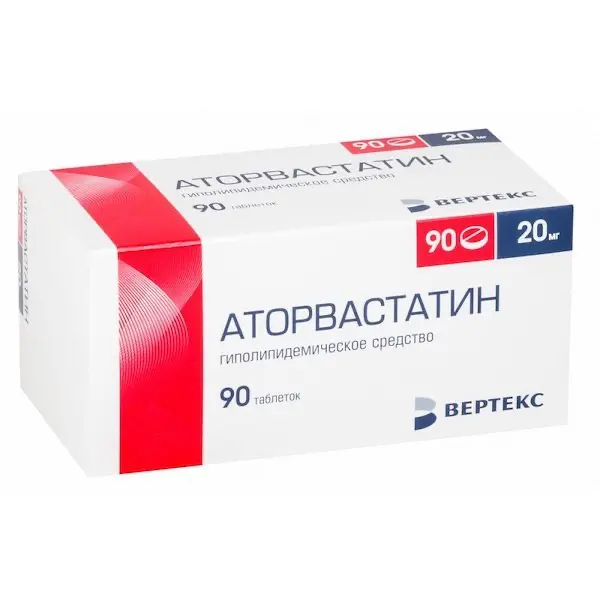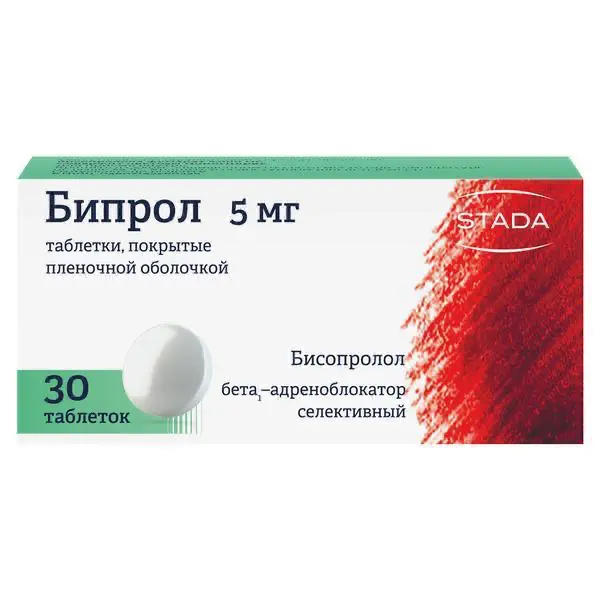Description
Ramipril Pharmacodynamics
Formed under the influence of “hepatic” enzymes, the active metabolite of ramipril, ramiprilat, is a long-acting ACE inhibitor (synonyms ACE: kininase II, dipeptidylcarboxydipeptidase I), which is a peptidyl dipeptidase, ACE in blood plasma and tissues catalyzes the conversion of angiotensin I to angio-tensin II, which has a vasoconstrictor effect, and the breakdown of bradykinin, which has a vasodilator effect.
Therefore, when ramipril is taken orally, angiotensin II production and bradykinin accumulation are reduced, resulting in vasodilatation and a decrease in blood pressure (BP). Increase of kallikre-kininin system activity in blood and tissues with prostaglandin system activation and increase of prostaglandins synthesis, stimulating nitric oxide formation in endotheliocytes, caused by ramipril causes its cardioprotective and endothelioprotective activity. Angiotensin II stimulates production of aldosterone, therefore, taking ramipril leads to decrease in aldosterone secretion and increase in serum potassium ions.
Decrease of angiotensin II concentration in blood eliminates its inhibitory effect on renin secretion as a negative feedback, which leads to increase of plasma renin activity.
It is assumed that the development of some undesirable reactions (in particular, “dry” cough) is also associated with an increase in bradykinin activity.
In patients with arterial hypertension, ramipril administration leads to a decrease of BP in “lying” and “standing” position, without compensatory increase in heart rate (HR). Ramipril significantly reduces total peripheral resistance of vessels (TPR) without causing changes in renal blood flow and glomerular filtration rate. The antihypertensive effect begins to appear 1-2 hours after a single oral dose of the drug, reaching its greatest value after
3-6 hours and lasts for 24 hours. When ramipril is taken as a course, the antihypertensive effect may increase gradually, stabilizing usually by 3-4 weeks of regular drug intake and then remaining for a long time. Sudden discontinuation of the drug does not lead to a rapid and significant increase in BP (no “withdrawal” syndrome).
In patients with arterial hypertension, ramipril slows down the development and progression of myocardial and vascular hypertrophy.
In patients with chronic heart failure, ramipril decreases PEEP (reduction of post-load on the heart), increases the capacity of the venous channel and decreases left ventricular filling pressure, which, accordingly, leads to a decrease of pre-load on the heart. In these patients, ramipril administration has increased cardiac output, ejection fraction and improved exercise tolerance.
In diabetic and nondiabetic nephropathy, ramipril slows the progression of renal failure and the time to the end stage of renal failure and thus reduces the need for hemodialysis or renal transplantation procedures. In the initial stages of diabetic or nondiabetic nephropathy, ramipril reduces the severity of albuminuria.
Indications
– Arterial hypertension (in monotherapy or in combination with other hypotensive drugs, e.g., diuretics and slow calcium channel blockers).
– Chronic heart failure (as part of combined therapy, particularly in combination with diuretics).
– Diabetic or nondiabetic nephropathy, preclinical and clinically expressed stages, including significant proteinuria especially in combination with arterial hypertension.
– Reduced risk of myocardial infarction, stroke or cardiovascular mortality in patients with high cardiovascular risk:
– In patients with confirmed coronary heart disease, a history of or without myocardial infarction, including patients who have undergone percutaneous transluminal coronary angioplasty, aortocoronary bypass surgery;
– in patients with a history of stroke;
– in patients with a history of peripheral arterial occlusive lesions;
– in patients with diabetes with at least one additional risk factor (microalbuminuria, arterial hypertension, increased plasma concentrations of OCs, decreased plasma concentrations of HDL-C, smoking).
– Heart failure with clinical manifestations developed during the first few days (from the 2nd day to the 9th day) after an acute myocardial infarction.
Contraindications
– Hypersensitivity to ramipril, other ACE inhibitors or to any of the components of the drug;
– history of angioedema (hereditary or idiopathic, or after taking ACE inhibitors) – risk of rapid development of angioedema;
– hemodynamically significant renal artery stenosis (bilateral or unilateral in case of a single kidney);
– Arterial hypotension (systolic BP less than 90 mmHg) or conditions with unstable hemodynamic parameters;
– hemodynamically significant stenosis of aortic or mitral valve or hypertrophic obstructive cardiomyopathy (HCMP);
– primary hyperaldosteronism;
– severe renal insufficiency (CKR less than 20 ml/min/1.73 m2 body surface area) (insufficient clinical experience);
– hemodialysis (insufficient clinical experience);
– pregnancy;
– Breast-feeding period;
– nephropathy treated with glucocorticosteroids, nonsteroidal anti-inflammatory drugs, immunomodulators and/or other cytotoxic agents (insufficient clinical experience);
– chronic heart failure in decompensation (insufficient experience of clinical use);
– under 18 years of age (insufficient clinical experience of use);
– hemodialysis or hemofiltration using certain negatively charged membranes, such as high-strength polyacrylonitrile membranes (risk of severe anaphylactic reactions);
– Low-density lipoprotein apheresis using dextran sulfate (risk of severe anaphylactoid reactions);
– Hyposensitizing therapy for hypersensitivity reactions to insect venoms, such as bees, wasps;
– cardiogenic shock;
– severe hepatic insufficiency (no experience in clinical use);
– concomitant use with aliskiren and drugs containing aliskiren in patients with diabetes mellitus and/or moderate to severe renal dysfunction (glomerular filtration rate (GFR) less than 60 ml/min/1.73 m2 body surface area);
– concomitant use with angiotensin II receptor antagonists (ARA II) in patients with diabetic nephropathy;
– galactose intolerance, lactase deficiency and glucose-galactose malabsorption syndrome;
– concomitant use with neutral endopeptidase inhibitors (e.g., with drugs containing Sacubitril) due to high risk of angioedema.
Additional contraindications when using the drug in the acute phase of myocardial infarction:
– severe heart failure (functional class IV according to NYHA classification);
– unstable angina pectoris;
– life-threatening ventricular arrhythmias;
– “pulmonary” heart.
- Tablets should be taken regardless of the time of eating (ie, tablets can be taken both before and during or after a meal) and wash down with a sufficient amount (1/2 cup) of water. You should not chew or crush the tablets before taking them.
- The dose is chosen according to the therapeutic effect and the patient’s tolerance to the drug. Treatment is usually prolonged, and its duration is determined on a case-by-case basis by the doctor.
- If not prescribed otherwise, the following dosing regimens are recommended for normal renal and hepatic function.
- In arterial hypertension.
- The usual starting dose is 2.5 mg once daily in the morning. If this dose fails to normalize BP over 3 weeks or more, the dose may be increased to 5 mg of ramipril daily. If the 5 mg dose is not effective enough, it may be doubled again after 2-3 weeks to the maximum recommended daily dose of 10 mg per day.
- As an alternative to increasing the dose to 10 mg daily if the daily dose of 5 mg is not sufficiently antihypertensive, other hypotensive agents, such as diuretics or slow calcium channel blockers, may be added to therapy.
- In chronic heart failure
- Recommended starting dose is 1.25 mg (1/2 tablet of 2.5 mg) once daily. The dose can be increased depending on the patient’s reaction to the therapy. It is recommended to double the dose at an interval of 1-2 weeks. If a daily dose of 2.5 mg or more is required, it may be given either once daily or divided into 2 doses.
- The maximum recommended daily dose is 10 mg.
- In diabetic or nondiabetic nephropathy
- The recommended starting dose is 1.25 mg (1/2 tablet of 2.5 mg) once daily. The dose may be increased to 5 mg once daily. The maximum daily dose is 5 mg.
- For these conditions, doses greater than 5 mg once daily in controlled clinical trials have been insufficiently studied.
- To reduce the risk of myocardial infarction, stroke or cardiovascular mortality in patients at high cardiovascular risk
- The recommended starting dose is 2.5 mg once daily. Depending on patient tolerance, the dose may be gradually increased. It is recommended that the dose be doubled after 1 week of treatment and increased to the usual maintenance dose of 10 mg once daily for the next 3 weeks of treatment.
- Doses greater than 10 mg have not been adequately studied in controlled clinical trials. Its use in patients with a CK of less than 0.6 ml/sec has not been adequately studied.
- In patients with cardiac insufficiency with clinical manifestations developed within several days (2nd to 9th day) after acute myocardial infarction.
- Initial dosage
- Treatment may be started not earlier than 48 hours from the moment of myocardial infarction (preferably from day 2 to 9 of the disease) in clinically and hemodynamically stable patients with clinical manifestations of heart failure.
- The recommended starting dose is 5 mg per day divided into two doses of 2.5 mg in the morning and evening. If a patient cannot tolerate this initial dose (excessive BP reduction is observed), it is recommended that he take 1.25 mg (1/2 tablet of 2.5 mg) twice daily for two days.
- Then, depending on the patient’s response, the dose may be increased. It is recommended that the dose be doubled at 1-3 day intervals when it is increased. Later, the total daily dose, which was initially divided into two doses, can be taken once.
- The maximum recommended daily dose is 10 mg.
- Currently, the experience in treatment of patients with severe chronic heart failure (functional class III-IV according to NYHA classification) arising directly after acute myocardial infarction is insufficient. If a decision is made to treat these patients with Ramipril, it is recommended that therapy should be started with the lowest possible dose of 1.25 mg (1/2 tablet
- 2.5 mg) once daily and care should be taken with each increasing dose.
- Administration of Ramipril in Selected Groups of Patients
- Patients with impaired renal function
- In patients with a CK of 50 to 20 ml/min per 1.73 m2 of body surface area, the initial daily dose is usually 1.25 mg (1/2 tablet of 2.5 mg). The maximum tolerated daily dose is 5 mg.
- Patients with not fully corrected electrolyte-water balance, patients with severe arterial hypertension as well as patients for whom an excessive decrease in BP represents a certain risk (e.g., in severe atherosclerotic lesions of coronary and cerebral arteries).
- The starting dose is reduced to 1.25 mg/day (1/2 tablet of 2.5 mg).





